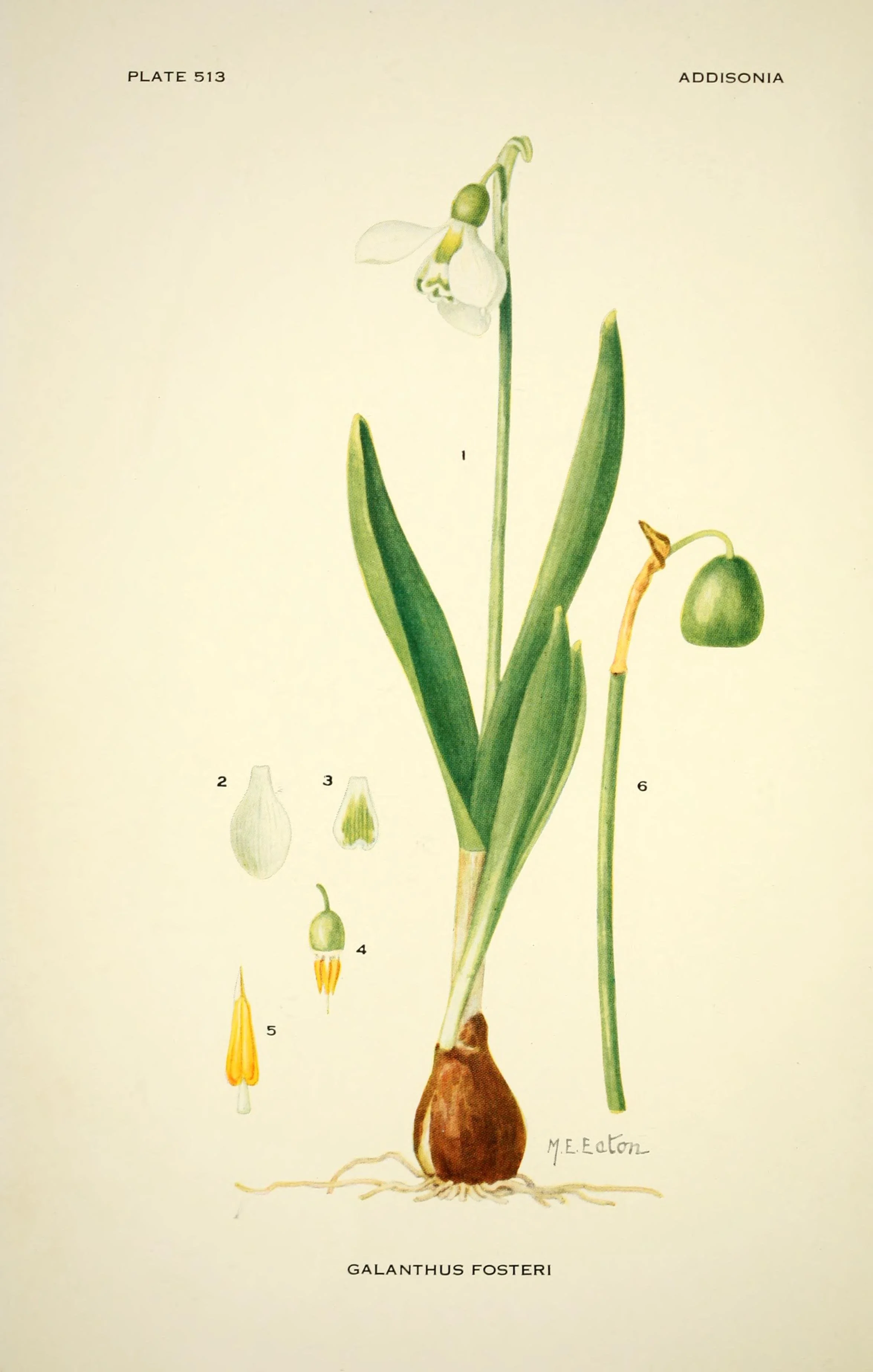

Galanthus 'Godfrey Owen'
Super rare and choice!
RHS Award of Merit winner!
Galanthus elwesii ‘Godfrey Owen’ has six pointed and concave, longer outer segments and six shorter inner segments. The inner markings are somewhat variable with two small dots at the apex sometimes joined to two smaller dots at the base.
‘Godfrey Owen’ was discovered in Shrewsbury around 1996 in a population of typical G. elwesii, the giant snowdrop, by renowned English galanthophile Margaret Owen and named for her husband. What a lucky find!
Hardy to USDA zones 4–8, ‘Godfrey Owen’ thrives in well-drained soil with partial to full shade, making it ideal for naturalizing in woodland gardens, rock gardens, and mixed borders. Its compact growth habit and reliable flowering make it perfect for planting beneath deciduous shrubs or alongside early spring bulbs. This cultivar’s unique display and refined form add subtle sophistication to any garden setting, especially when mass planted for a striking early-season display.
Super rare and choice!
RHS Award of Merit winner!
Galanthus elwesii ‘Godfrey Owen’ has six pointed and concave, longer outer segments and six shorter inner segments. The inner markings are somewhat variable with two small dots at the apex sometimes joined to two smaller dots at the base.
‘Godfrey Owen’ was discovered in Shrewsbury around 1996 in a population of typical G. elwesii, the giant snowdrop, by renowned English galanthophile Margaret Owen and named for her husband. What a lucky find!
Hardy to USDA zones 4–8, ‘Godfrey Owen’ thrives in well-drained soil with partial to full shade, making it ideal for naturalizing in woodland gardens, rock gardens, and mixed borders. Its compact growth habit and reliable flowering make it perfect for planting beneath deciduous shrubs or alongside early spring bulbs. This cultivar’s unique display and refined form add subtle sophistication to any garden setting, especially when mass planted for a striking early-season display.






